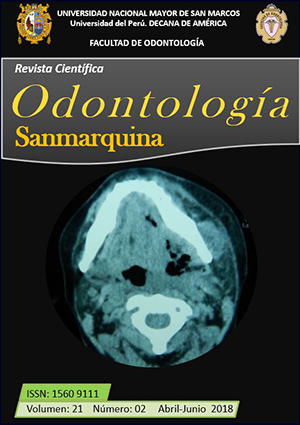Corticotomy: greater speed in orthodontic treatment
DOI:
https://doi.org/10.15381/os.v21i2.14777Keywords:
Minimally invasive surgical procedure, Oral surgical procedures, Tooth movementAbstract
The aim of the review is to contribute to the optimization of decision-making based on scientific evidence that explains how the corticotomy contributes to the acceleration of dental movement and whether the advantages are greater than the surgical risks associated with the technique. Corticotomy is defined as the surgical intervention limited to the cortical portion of the alveolar bone. Therefore, unlike an osteotomy, the corticotomy procedure only penetrates the medullary bone, either buccally or lingually. But it is an invasive method in which the patient needs to be correctly selected and informed of the post-operative conditions and the potential risks of surgery. Because it stimulates the process of bone regeneration through controlled surgical injuries, which leads to accelerate tooth movement in orthodontic treatment; with less prolonged activations. It can reduce the time of orthodontic treatment from a third to a quarter of the time typically required. Accelerating tooth movement during the first 2 months after the intervention and long-term effects indicate stability.Downloads
Downloads
Published
Issue
Section
License
Copyright (c) 2018 Jennifer Saavedra Vargas, Yéssica Chahuara Ramírez, Arturo Quispe Prado, Jessica Arieta Miranda

This work is licensed under a Creative Commons Attribution-NonCommercial-ShareAlike 4.0 International License.
AUTHORS RETAIN THEIR RIGHTS:
a. Authors retain their trade mark rights and patent, and also on any process or procedure described in the article.
b. Authors retain their right to share, copy, distribute, perform and publicly communicate their article (eg, to place their article in an institutional repository or publish it in a book), with an acknowledgment of its initial publication in the Odontología Sanmarquina.
c. Authors retain theirs right to make a subsequent publication of their work, to use the article or any part thereof (eg a compilation of his papers, lecture notes, thesis, or a book), always indicating the source of publication (the originator of the work, journal, volume, number and date).






